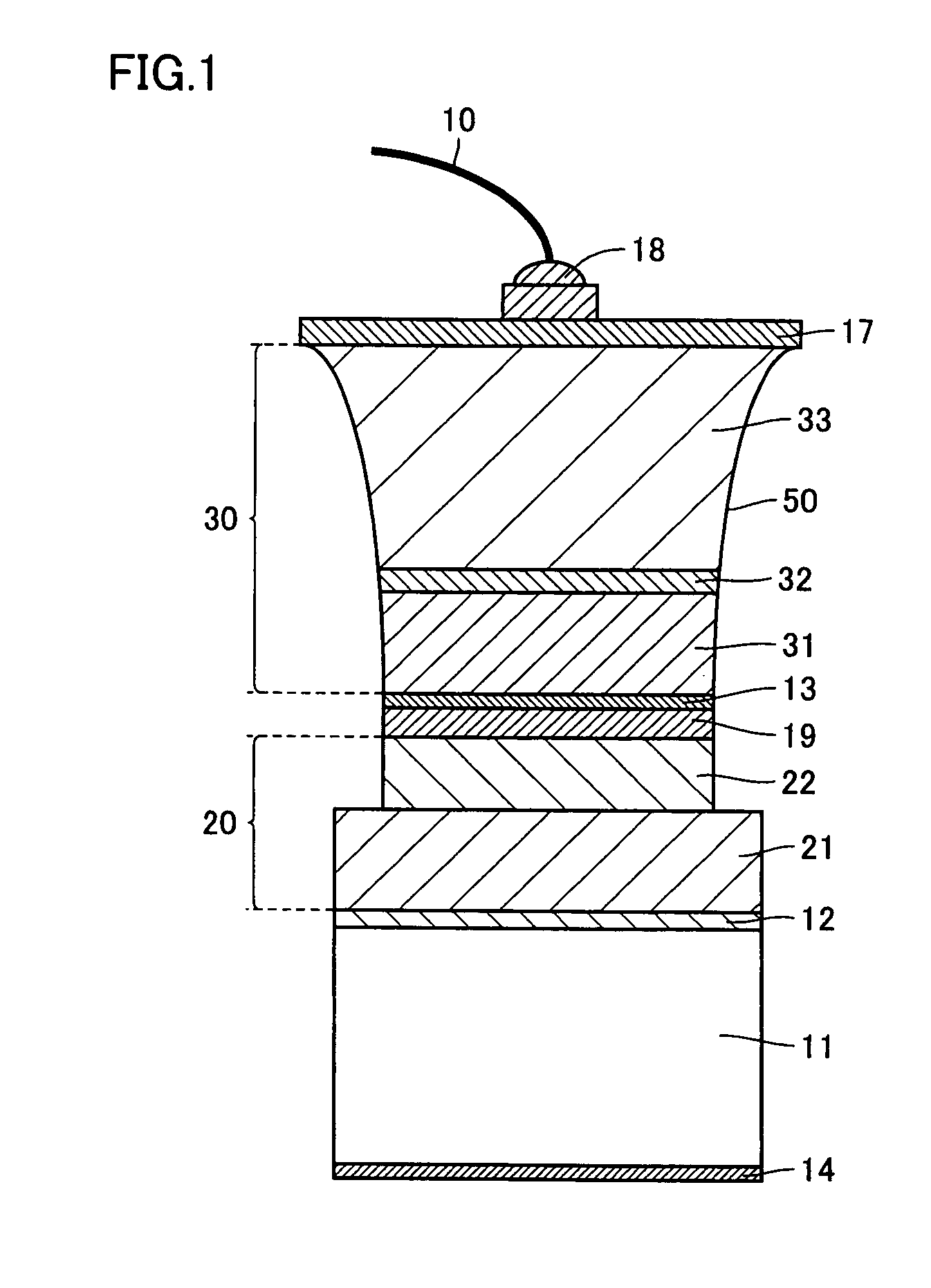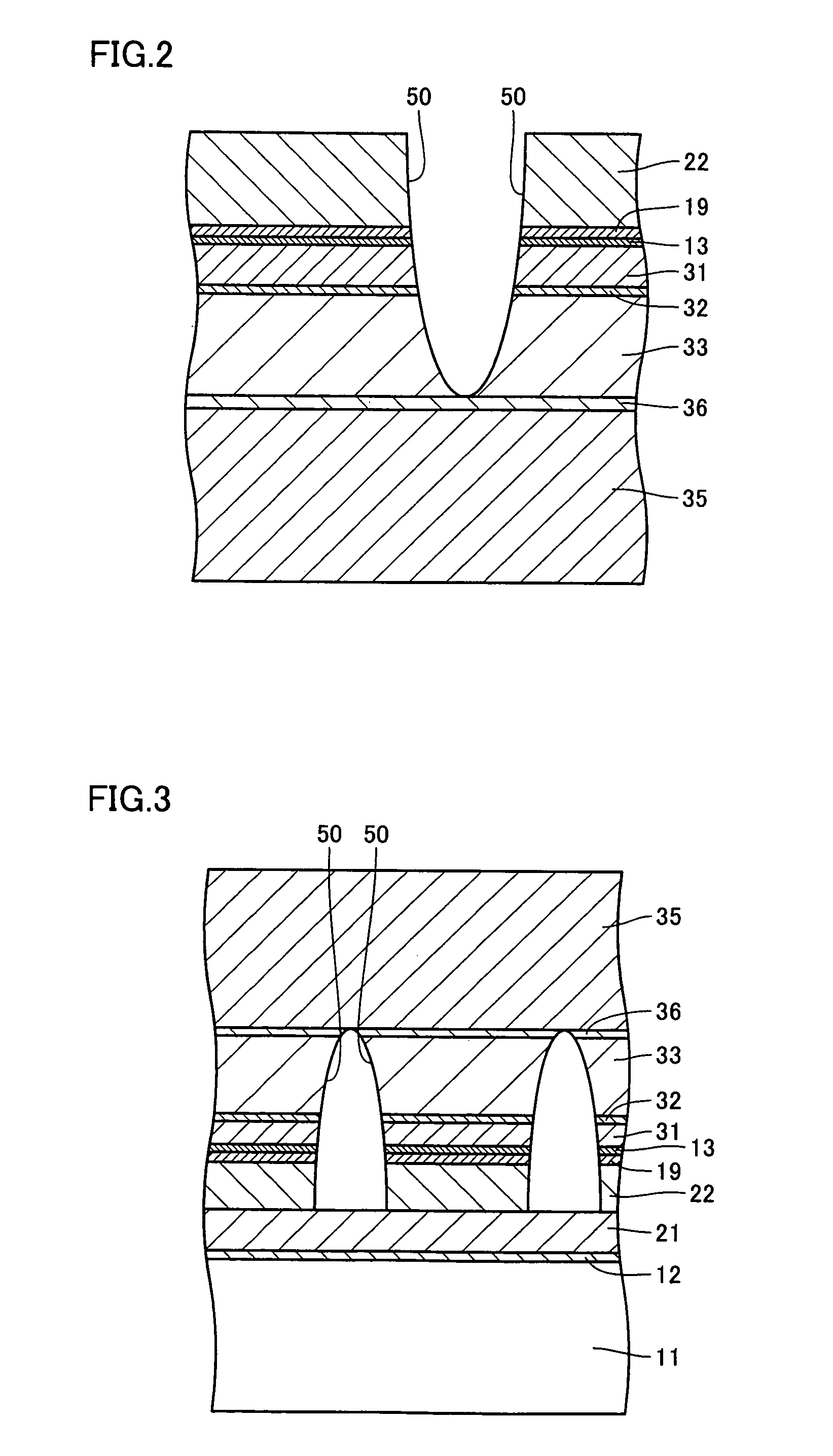Nitride-based compound semiconductor light emitting device, structural unit thereof, and fabricating method thereof
a technology of compound semiconductors and light emitting devices, which is applied in the direction of semiconductor devices, electrical devices, basic electric elements, etc., can solve the problems of difficult uniform heat and pressure bonding of the entire surface of the large-area conductive substrate to the entire surface of the nitride-based compound semiconductor layer, peeling of the entire surface, and ohmic electrodes and the bonding metal layer, etc., to achieve high reliability, improve adhesion, and good yield
- Summary
- Abstract
- Description
- Claims
- Application Information
AI Technical Summary
Benefits of technology
Problems solved by technology
Method used
Image
Examples
example 1
[0072]In the present example, a nitride-based compound semiconductor light emitting device as shown in FIG. 1 was formed, as will be explained in detail below.
[0073]On a sapphire substrate serving as second substrate 35, a buffer layer 36 made of a GaN material, an N-type nitride-based compound semiconductor layer 33, a multi-quantum well (MQW) light emitting layer 32, and a P-type nitride-based compound semiconductor layer 31 were formed successively by MOCVD. Specifically, GaN buffer layer 36 was formed to a thickness of 20 nm, N-type nitride-based compound semiconductor layer 33 was formed to a thickness of 5 μm, MQW light emitting layer 32 was formed to a thickness of 50 nm, and P-type nitride-based compound semiconductor layer 31 was formed to a thickness of 150 nm.
[0074]Next, a concave groove portion 50 was formed in the nitride-based compound semiconductor layer formed on the sapphire substrate. RIE was employed at this time. The width of the concave groove portion was set to...
example 2
[0082]In the present example, a nitride-based compound semiconductor light emitting device as shown in FIG. 6 was fabricated, as described in detail in the following.
[0083]On a sapphire substrate serving as second substrate 35, a buffer layer 36 made of a GaN material, an N-type nitride-based compound semiconductor layer 33, a MQW light emitting layer 32, and a P-type nitride-based compound semiconductor layer 31 were formed successively, by MOCVD. Specifically, on the sapphire substrate, GaN buffer layer 36 was formed to a thickness of 30 nm, N-type nitride-based compound semiconductor layer 33 was formed thereon to a thickness of 5 μm, MQW light emitting layer 32 was formed thereon to a thickness of 50 nm, and P-type nitride-based compound semiconductor layer 31 was formed thereon to a thickness of 200 nm.
[0084]Next, a concave groove portion 50 was formed in the nitride-based compound semiconductor layer on the sapphire substrate, using RIE. The concave groove portion was made in ...
PUM
| Property | Measurement | Unit |
|---|---|---|
| resistivity | aaaaa | aaaaa |
| resistivity | aaaaa | aaaaa |
| resistivity | aaaaa | aaaaa |
Abstract
Description
Claims
Application Information
 Login to View More
Login to View More - R&D
- Intellectual Property
- Life Sciences
- Materials
- Tech Scout
- Unparalleled Data Quality
- Higher Quality Content
- 60% Fewer Hallucinations
Browse by: Latest US Patents, China's latest patents, Technical Efficacy Thesaurus, Application Domain, Technology Topic, Popular Technical Reports.
© 2025 PatSnap. All rights reserved.Legal|Privacy policy|Modern Slavery Act Transparency Statement|Sitemap|About US| Contact US: help@patsnap.com



